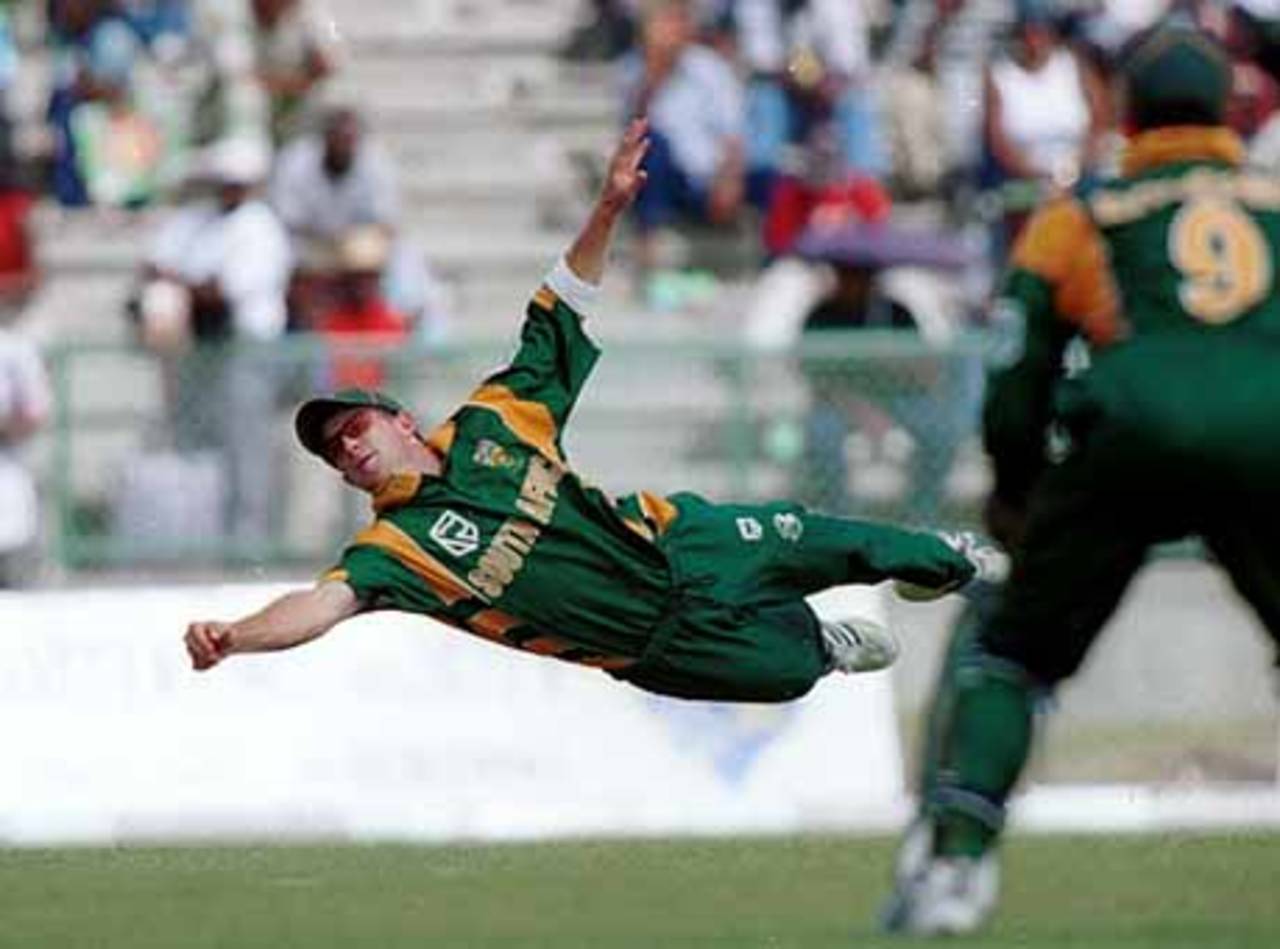On a steamy, glowering Brisbane
Sunday afternoon, South Africa's hopes of daring to dream of a World Cup semi-final place, or making the final, were faltering.
Jonty Rhodes, a blue-eyed bundle of 22-year-old energy, was lurking at point as an anxious Inzamam-ul-Haq and his captain, Imran Khan, worked the ball around, searching for runs; sweating with resolve, giving Pakistan the edge.
It is March 8, 1992: a buzzing Gabba crowd and television audiences both sides of the Indian Ocean are trying to understand the mathematical minefield of playing conditions with sneaky rain-interruption clauses. If you think Duckworth-Lewis is a conundrum, regulations employed for the 1992 World Cup gave a bigger sarcastic middle finger with its dirty imprint to the question of run-rate equation.
It was a game South Africa needed to win. An euphoric tournament-opening success over Australia
in Sydney was followed with defeats by
New Zealand and
Sri Lanka before they beat
West Indies in Christchurch.
In Brisbane rain had halted the Pakistan innings after South Africa scored a stodgy 211 for 7 in 50 overs. Imran Khan, on winning the toss, had gambled with the conditions. Rain and the absurd "best overs" run rate had Pakistan - 74 for 2 in the 22nd over at the interruption - facing a revised target of 194 in 36 overs.
As a prologue, months earlier a curious sports community had embraced cricket's prodigal child, South Africa, after a politically forced absence of 21 years, when they embarked on a historic tour of India. However, the side, led by Clive Rice, also received a grim lesson in strategy during that remarkable eight-day journey.
It became all too evident their gameplans were sadly festooned with outdated thinking. For the World Cup in Australia and New Zealand, fresh ideas were needed and Kepler Wessels knew the conditions better than anyone. He had taken the tougher route to achieve a Test cap: Australia in preference to England, and learnt what was needed to survive in such a competitive environment. From this experience he knew how to compete on the big fields of Australia. It would demand fit, quick-thinking, streetwise players.
Rhodes had already established a template for fielding expertise before the tournament. Some of it adapted from hockey, where he was a dynamic player, teaching him alertness and anticipation. Having seen him close up in both sports, the run-out of Inzamam at the Gabba was not surprising.
The scoreboard reads 135 for 2, Inzamam, flails at the delivery and it flies off the pad; a prowling Rhodes at backward point swoops on the ball, a panicking Imran has Inzamam scooting back too late.
Memory recalls it in slow motion: Rhodes analytically processing the moment; in the next eight seconds he charges in, ball in hand, arm outstretched, dismantling the stumps to perform the most celebrated run-out and fielding act of the decade, creating an international reputation and establishing a legacy.

